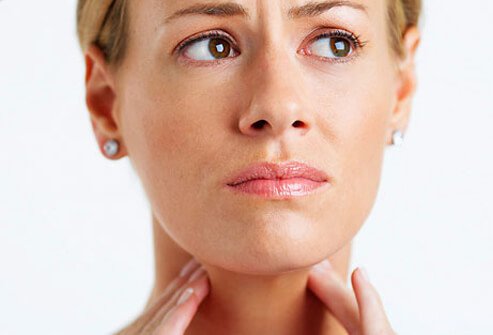Dysphagia is a condition wherein a person experiences difficulty in swallowing. In some cases, dysphagia causes pain. And dysphagia leads to, at times, a complete inability to swallow at all. Sometimes, dysphagia causes can’t be identified. (1) However, some common causes might include sphincter issues as well as GERD. There are a number of natural dysphagia treatment methods you can try to help lessen symptoms. Conventional dysphagia treatment might include medication or surgery. But there are natural remedies as well. For example, good posture and a dysphagia diet are both part of a natural dysphagia treatment plan. And changes in food consistency as well as temperature are just part of a proper dysphagia diet. To learn more about dysphagia treatment methods, including what changes to make for a dysphagia diet, read below.

 Swallow maneuvers deal with various physiologic swallowing issues. Examples of this include supraglottic swallow, wherein you you’re your breath, swallow, then gently cough. There is also the super supraglottic swallow, the sequence of which is holding your breath, bearing down, swallowing then gently coughing. There is also the effortful, which is swallowing harder. (5)
Swallow maneuvers deal with various physiologic swallowing issues. Examples of this include supraglottic swallow, wherein you you’re your breath, swallow, then gently cough. There is also the super supraglottic swallow, the sequence of which is holding your breath, bearing down, swallowing then gently coughing. There is also the effortful, which is swallowing harder. (5)
 Eating smaller meals, using thickening agents, and chopping or pureeing solid foods can all make swallowing easier. Additionally, changing the taste and temperature of food might help.
Furthermore, developing a feeding strategy can help ease dysphagia symptoms. For example, a patient may figure how what volume of food per swallow can be permitted with each bite. (9)
Eating smaller meals, using thickening agents, and chopping or pureeing solid foods can all make swallowing easier. Additionally, changing the taste and temperature of food might help.
Furthermore, developing a feeding strategy can help ease dysphagia symptoms. For example, a patient may figure how what volume of food per swallow can be permitted with each bite. (9)

But first, let’s explore some more common causes of dysphagia. (2)
- Achalasia: This is when your sphincter doesn't relax properly to let food enter your stomach.
- Diffuse spasm: This affects the involuntary muscles in the walls of your lower esophagus.
- Esophageal stricture" A narrowed esophagus, which can be caused by GERD, may trap large pieces of food.
- Esophageal tumors
- Foreign bodies lodged in your throat
- Esophageal ring: This is a thin area of narrowing in the lower esophagus. It can occasionally cause difficulty swallowing solid foods.
- Eosinophilic esophagitis: This condition may be related to a food allergy. An overpopulation of cells called eosinophils in the esophagus can cause this to occur.
- Scleroderma: Development of scar-like tissue can harden tissues. This in turn can weaken your lower esophageal sphincter, which allows acid to back up into your esophagus and cause frequent heartburn.
- Radiation therapy: This can lead to inflammation and scarring in the esophagus.
Here are some common symptoms of dysphagia: (3)
- Having pain while swallowing
- Being unable to swallow
- Having the sensation of food getting stuck in your throat or chest or behind your breastbone
- Drooling
- Being hoarse
- Bringing food back up (regurgitation)
- Having frequent heartburn
- Having food or stomach acid back up into your throat
- Unexpectedly losing weight
- Coughing or gagging when swallowing
- Having to cut food into smaller pieces
- Avoiding certain foods because of trouble swallowing
Here are 6 natural treatments for dysphagia
1. Postural Adjustments
Changes in posture may alter the speed and direction of a food or liquid. Additionally, they can protect the airway, which will help the patient to swallow safely. However, not all postures work the same for every patient. Generally speaking, postural adjustments are intended to be short-term treatments. However, they can reduce the chances of aspiration. Specific postures include head tilt, head rotation, chin tuck, side lying and head back. A speech pathologist can work with the patient to help decide what posture change would work the best. (4)2. Swallow Maneuvers
 Swallow maneuvers deal with various physiologic swallowing issues. Examples of this include supraglottic swallow, wherein you you’re your breath, swallow, then gently cough. There is also the super supraglottic swallow, the sequence of which is holding your breath, bearing down, swallowing then gently coughing. There is also the effortful, which is swallowing harder. (5)
Swallow maneuvers deal with various physiologic swallowing issues. Examples of this include supraglottic swallow, wherein you you’re your breath, swallow, then gently cough. There is also the super supraglottic swallow, the sequence of which is holding your breath, bearing down, swallowing then gently coughing. There is also the effortful, which is swallowing harder. (5)
3. Thickened Liquids
Thickened liquids help control the speed, direction, duration and clearance of chewed food. When it comes to which thickening liquid works best, results vary. Honey and nectar are common choices. (6) The least viscous liquid is used for mild cases of dysphagia, while thicker forms are used for more severe cases. (7)4. Exercises for the Tongue, Lips and Jaw
Oral-motor exercises can help increase range of movement. They assist with structural or tissue damage. Furthermore, they can strengthen muscles and increase tongue base retraction. (8)5. Diet Modifications
 Eating smaller meals, using thickening agents, and chopping or pureeing solid foods can all make swallowing easier. Additionally, changing the taste and temperature of food might help.
Furthermore, developing a feeding strategy can help ease dysphagia symptoms. For example, a patient may figure how what volume of food per swallow can be permitted with each bite. (9)
Eating smaller meals, using thickening agents, and chopping or pureeing solid foods can all make swallowing easier. Additionally, changing the taste and temperature of food might help.
Furthermore, developing a feeding strategy can help ease dysphagia symptoms. For example, a patient may figure how what volume of food per swallow can be permitted with each bite. (9)





